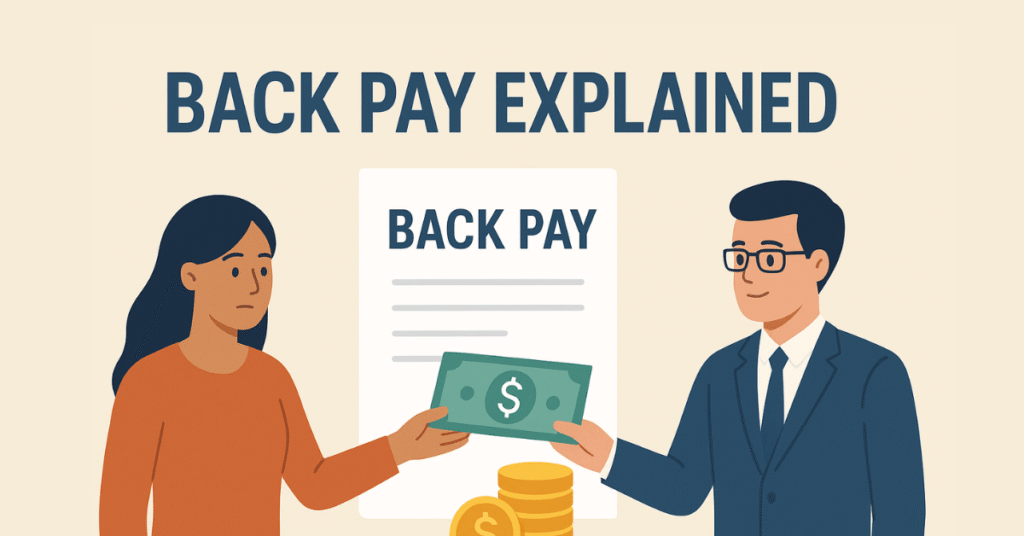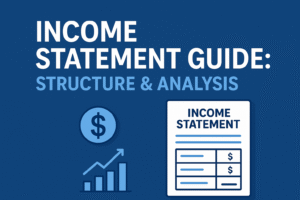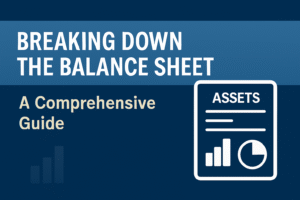Back pay—often called back wages—is the compensation an employee is owed for past work periods when the correct amount of pay wasn’t issued. Whether due to payroll errors, wage violations, misclassification, or wrongful termination, back pay represents an employee’s legal right to receive the money they’ve rightfully earned. For employers, it serves as a legal and ethical obligation that protects workplace fairness and compliance.
What Is Back Pay?
Back pay refers to any wages, salary, or employment benefits owed to an employee for a period during which they should have been paid but were not. It’s essentially retroactive payment—a way to correct past underpayments, missed bonuses, or wage errors.
For example, if an employee was underpaid for overtime in 2023 due to a payroll system glitch, the difference between what was paid and what should’ve been paid is considered back pay.
Why Takeaway:
Back pay ensures employees are made whole for previous compensation errors or violations, while holding employers accountable under federal and state labor laws.
Why Back Pay Matters
Back pay isn’t just about recovering lost wages—it’s about upholding workplace fairness and compliance. Here’s why it’s important:
- Legal Protection: Under the Fair Labor Standards Act (FLSA), employers must pay employees for all hours worked, including overtime. Violations can result in significant penalties and back pay awards.
- Employee Fairness: It ensures that employees receive the full compensation they’ve earned, maintaining morale and trust.
- Financial Accountability: For businesses, addressing back pay issues reduces the risk of lawsuits and government enforcement actions.
- Workplace Compliance: The threat of back pay claims motivates employers to adopt transparent, accurate payroll practices.
Common Reasons for Back Pay
Back pay claims can arise in several situations, both intentional and unintentional. The most frequent causes include:
1. Wrongful Termination
If an employee is fired unlawfully (e.g., due to discrimination or retaliation), a court may order reinstatement and require the employer to pay back wages for the period of unemployment.
2. Payroll Errors
Simple accounting mistakes—like miscalculating hours, overtime, or salary adjustments—can result in unpaid amounts that must later be reimbursed.
3. Minimum Wage or Overtime Violations
Failing to pay the federal or state minimum wage, or not paying time-and-a-half for overtime, automatically triggers back pay liability under the FLSA.
4. Misclassification of Employees
Employers sometimes (knowingly or mistakenly) classify workers as “exempt” or as independent contractors to avoid paying overtime or benefits. If proven incorrect, employees can recover years of back pay.
5. Unpaid Commissions or Bonuses
Sales professionals or performance-based employees may be owed unpaid bonuses, commissions, or incentives that were wrongfully withheld or miscalculated.
6. Discriminatory Pay Practices
Unequal pay for equal work—based on gender, race, age, or other protected characteristics—can lead to back pay settlements under laws like the Equal Pay Act or Title VII of the Civil Rights Act.
7. Delayed Raises or Promotions
If an agreed-upon raise or promotion was implemented late, the employee might be owed the pay difference retroactively.
Back Pay vs. Retroactive Pay
These two terms often sound similar, but they have different implications:
| Aspect | Back Pay | Retroactive Pay |
| Definition | Payment owed for prior underpayment, errors, or violations. | Payment adjustment made after a salary increase or policy change. |
| Cause | Legal non-compliance or administrative error. | Policy change or new contract terms applied to a previous period. |
| Example | Employee wasn’t paid overtime due for three months. | Employer approves a pay raise effective from last month. |
Legal Framework for Back Pay
Back pay rights and obligations in the U.S. are governed by federal and state laws.
1. Fair Labor Standards Act (FLSA)
The FLSA sets national standards for minimum wage, overtime, and recordkeeping. If an employer violates these rules, they can be required to pay back wages and, in many cases, liquidated damages equal to the amount of unpaid wages.
2. Equal Pay Act
Prohibits wage discrimination based on gender. Employees subjected to unequal pay can recover back pay for the differential period.
3. Title VII of the Civil Rights Act
Covers discrimination based on race, color, religion, sex, or national origin. Back pay is a common remedy in discrimination cases.
4. Family and Medical Leave Act (FMLA)
If an employer wrongfully denies leave or retaliates against an employee for using it, back pay may be part of the recovery.
5. State Wage Laws
Many states have their own wage and hour laws that extend protections beyond federal standards. For instance, California allows back pay claims up to three years (and four years for unfair competition claims).
How to Calculate Back Pay
The calculation depends on what type of compensation was underpaid.
Step 1: Determine the Pay Periods Affected
Identify each pay period in which the employee was underpaid or unpaid.
Step 2: Calculate the Wage Difference
Compare what should have been paid versus what was actually paid. Include overtime, commissions, or bonuses if applicable.
Step 3: Add Other Benefits
Include the value of lost benefits, such as:
- Employer 401(k) contributions
- Health insurance premiums
- Paid time off
- Stock options or incentive pay
Step 4: Apply Interest or Penalties (If Required)
Some states require employers to pay interest on back wages or additional penalties for willful violations.
Example:
If an employee earning $25/hour worked 10 unpaid overtime hours per week for 4 weeks, the owed amount would be:
10 × 4 × ($25 × 1.5) = $1,500 in back pay.
How to Claim or Recover Back Pay
Employees who believe they are owed back pay can pursue several channels:
1. Through the U.S. Department of Labor (DOL)
Employees can file a complaint with the Wage and Hour Division (WHD) of the DOL. The agency investigates and can order the employer to pay back wages.
2. Through a State Labor Department
Each state has its own wage claim process. Some allow administrative hearings that can result in legally binding payment orders.
3. Private Lawsuit
Employees can file a civil lawsuit in federal or state court seeking:
- Back pay
- Liquidated damages (often equal to the unpaid wages)
- Attorney’s fees and court costs
4. Through Union or Employment Contracts
Unionized employees may file a grievance under their collective bargaining agreement to recover unpaid wages.
5. Settlement or Negotiation
In many cases, disputes are resolved through negotiation or mediation, avoiding the cost of litigation.
Time Limits for Filing a Back Pay Claim
- FLSA Claims:
- Standard: 2 years from the date of violation.
- Willful Violations: 3 years.
- EEOC (Discrimination) Claims:
- Typically must be filed within 180 or 300 days, depending on the state.
- State Claims:
- Vary widely; some states allow up to 6 years for wage claims.
How Employers Should Handle Back Pay
Employers must act quickly once a wage issue is identified:
- Audit Payroll Records Regularly – Spot miscalculations before they escalate.
- Consult Legal Counsel – Especially if multiple employees are affected or claims involve discrimination.
- Issue Corrected Payments Promptly – Including updated pay stubs and explanations.
- Document Everything – Maintain records of hours, pay adjustments, and communications.
- Consider Employment Practices Liability Insurance (EPLI) – To help cover legal expenses and potential settlements.
Proper handling of back pay helps avoid additional penalties and preserves the employer’s reputation.
Back Pay and Taxes
Back pay is taxable income. The IRS requires employers to:
- Report back pay on Form W-2 if the worker was an employee.
- Withhold applicable federal income tax, Social Security, and Medicare.
- Report it in the year it’s paid, not the year it was earned.
If the back pay relates to a previous year, it might result in a higher tax liability, but employees may qualify for income averaging or tax adjustments in certain cases.
Preventing Back Pay Disputes
The best strategy for both employers and employees is prevention:
- Maintain accurate time and attendance records.
- Regularly audit overtime and bonus calculations.
- Provide clear written policies on pay rates, raises, and commissions.
- Train payroll and HR staff on federal and state wage laws.
- Encourage open communication about pay discrepancies before they become disputes.
Frequently Asked Questions (FAQs)
1. Is back pay the same as unpaid wages?
Not exactly. Unpaid wages usually refer to current or recent missed payments, while back pay often covers retroactive corrections or court-ordered payments from past periods.
2. Can I get back pay if I was misclassified as an independent contractor?
Yes. If you can prove you were effectively an employee, you may be entitled to back pay for minimum wage, overtime, and benefits.
3. What happens if an employer refuses to pay back pay?
You can file a claim with the DOL or take legal action. Courts can order payment and impose penalties.
4. Is there interest on back pay?
Some jurisdictions require employers to pay interest or “liquidated damages” equal to the unpaid amount.
5. Does back pay affect unemployment benefits?
Yes. If you receive back pay for a period when you collected unemployment, you may need to repay part of your unemployment benefits.
Final Thoughts
Back pay plays a vital role in protecting the integrity of the employer-employee relationship. For workers, it ensures fairness and justice when compensation errors occur. For employers, it reinforces the importance of compliance, accurate payroll systems, and transparent labor practices. Whether handled through administrative correction or legal process, back pay ultimately reflects one principle: employees must be paid what they’ve rightfully earned.






